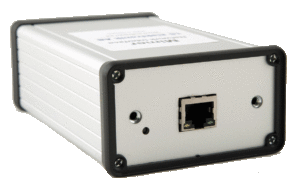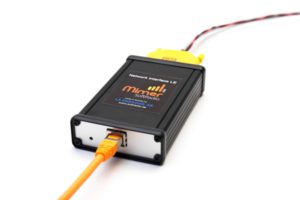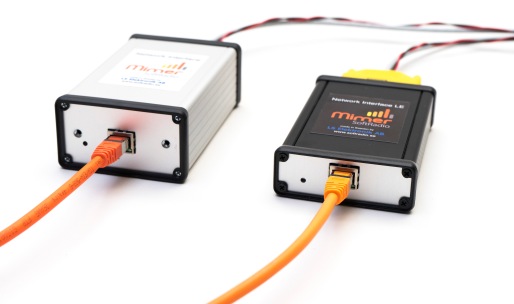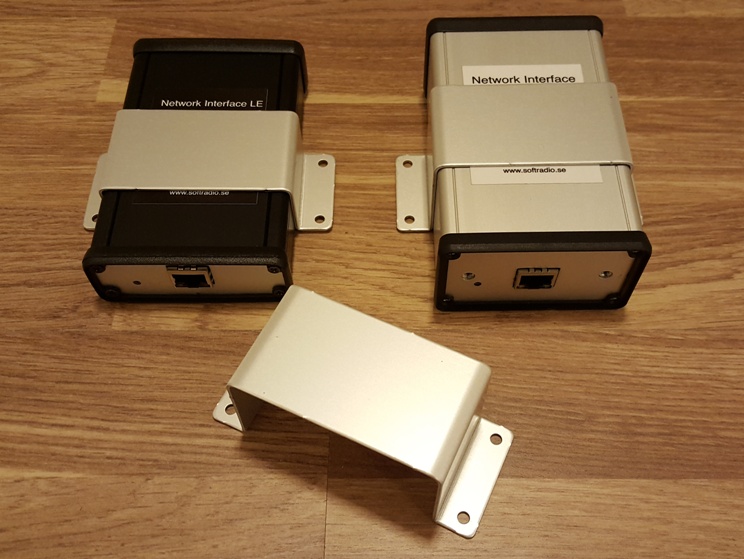Mimer Network Interfaces
The Network Interface is the bridge between the radio (or other device) and the IP network. It handles both the audio and the control signals.
There are many different types for different radio models and also the universal types with less functionality.
See each radio type for further description of the functions. There is also a separate page that describes the universal interfaces.
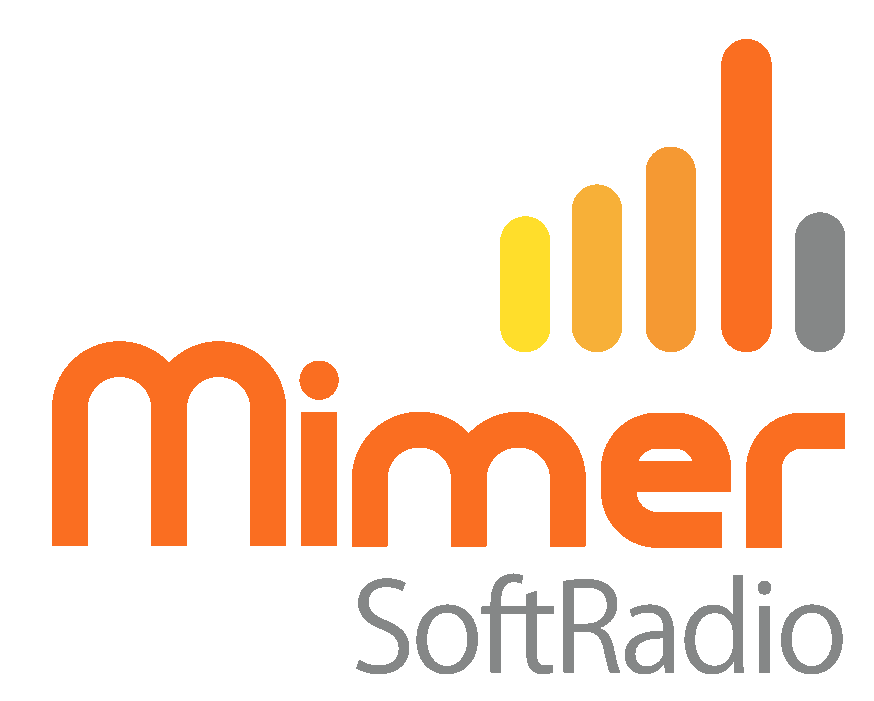
The Network Interface
The purpose of the Network Interface is to be a bridge between the radio and the IP network. It transforms audio and signalling from analogue to digital and back again.
The Network Interface has a very flexible design so the radio control signals can be configured to fit almost any radio on the market, both analogue and digital.
The Network Interface has connections for Audio input and output. It also connects to I/O control signals like Squelch, PTT, Alarm, Off-hook, etc. as well as PEI and other radio remote control signals.
The IP network connection is a standard 10/100 base-T Ethernet connection. Both TCP and UDP network protocols are available simultaneously depending on the system configuration. This allows a flexible approach for designing the most optimum network based system.
The interface has a design that fits most standard uses with none or very small modifications. For the radios that Mimer SoftRadio supports with Virtual Control Heads there are versions available where all setups and adjustments are already preconfigured.
There are also special Network Interfaces to be used with phone lines or intercom instead of radios, and also interfaces for Mimer SoftLine.
The Network Interface runs on 12VDC just as most radios and is therefore easy to power from the same source as the radio, and to feed with backup power. If power is lost and restored, the Network Interface will restart itself in a matter of seconds when the power comes back.
Reduced bandwidth - Option 3323
The standard audio codec used in SoftRadio gives a lean bandwith use of less than 100kBit/s when there is audio to or from the network interface. In most setups this is adequate, but in some cases there is a need for a further reduced bandwidth, i.e. satellite connection.
For the standard network interfaces there is an option (3323) for reduced bandwidth. This must be ordered at the same time as the interface so that it is factory installed. The operator software adjusts automatic to the setting in the interface and can handle different settings in different interfaces.
When doing the setup of the interface a new selection will be shown. There are three levels; Standard, Medium and Low. Where the medium will give a reduction to under half the normal and low under 1/4th of the normal.
The medium setting is hardly noticable, while the low setting gives a definite reduction of audio quality.
We messure the bandwidth over a local UDP path. Using TCP over the Internet, a VPN tunnel and/or a satellite connection might add an overhead, to the bandwidth, outside our control.
Remember that a reduced bandwith means that the audio packages will be sent further apart and you therefor need to expand the audio buffer, giving a larger delay on the audio path.
Specifications for the Standard Network Interface
Specification for the standard version of the Mimer Network Interface: 3009/XX
You will find a complete description on the Download Page.
Mechanical
Size
130 x 80 x 44 mm
Weight
<300g (typ. 260g)
Power Supply
9-18 VDC / 250 mA
Temperature Range
-10 – +50 °C
Connectors
D-sub for audio, power, I/O, data and auxiliary I/O
RJ45 for Ethernet
Audio
Input (from radio speaker output)
0.7-13Vpp (0.25-4.5Vrms)
Output (to radio microphone input)
0-1.1Vpp
Other versions with line transformers on the audio ports are also available
I/O Ports
3 Inputs
On = 2.5-30V / Off = 0-0.8V, 47kohm impedance to ground
AUX Data port*
RS232 compatible inputs and outputs
Data I/O for radio control
RS232, TTL, USB and other manufacturer-specific protocols
3 Open Collector outputs
Max 30V / Max 10mA. Optional reverse-current protected 5.6k pull-up to +5V
Note: The I/O and data ports are used to interface with different radio types, depending on type of radio, free ports may be available for auxiliary use.
The standard interface can be used in full duplex. This is standard when used with Tetra radios and selectable with other radios.
There are also special versions with other types of connectors and ports.
The Network Interface LE
Network Interface LE: 3130
The LE model is an entry level interface with less functions aimed at customers that need only to remote control simplex audio and PTT on their radios.
This is perfect for customers running simple radios with only one channel/talk group and open voice traffic, for example taxi companies or an Airband radio at an airport.
The “LE” interface has no functions for virtual control heads, no functions for I/O ports, cannot connect to land lines, cannot run in full duplex, cannot have the reduced bandwidth option and cannot be upgraded with option boards.
The price is of course matched to the slimmed functionality.
Mechanically the interface is lower than the standard model, 130 x 80 x 30 mm.
It has the same connectors except the I/O´s.
The “LE” is remote controled with the same software “Mimer SoftRadio”, and you can mix and match standard interfaces with “LE” interfaces in the same system.
The same functions regarding local (UDP) or remote (TCP) connection applies as with the standard interface.
Network Interfaces
Line level connection
There are specal versions of the network interface with built in line transformers for connection to, 2 or 4 wire, land lines @ 600 Ohm. Useful when working with old base station systems.
Other than radio
There are special versions of the network interface that connects to phone lines, Intercom, PA, Foghorns etc., instead of a radio. Please ask if you have a special need.
Brackets
For installation there are brackets available. The silver box also have two threaded holes, M4, on the front.

